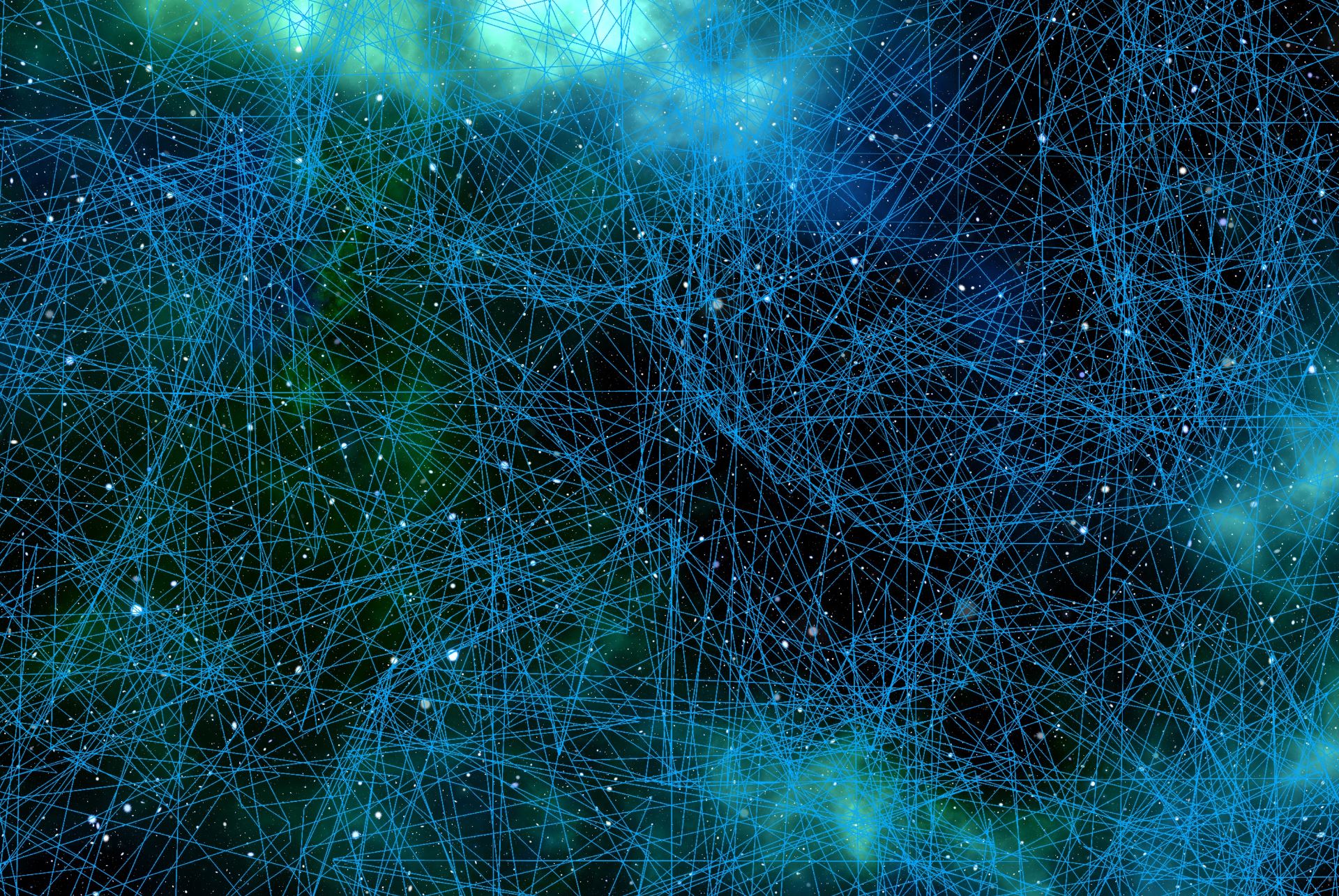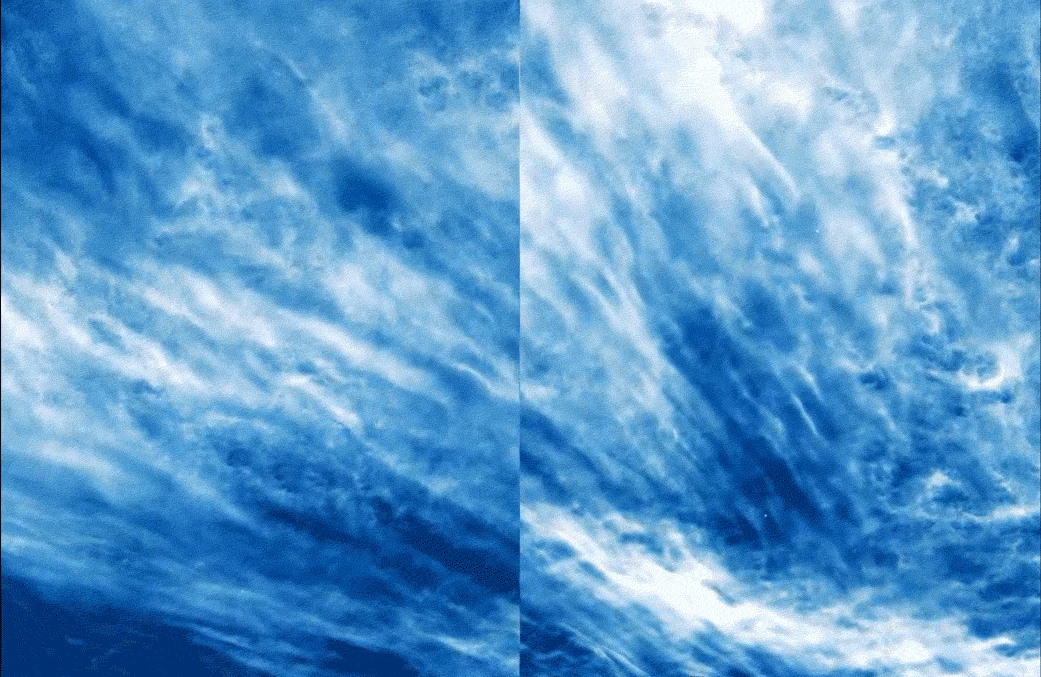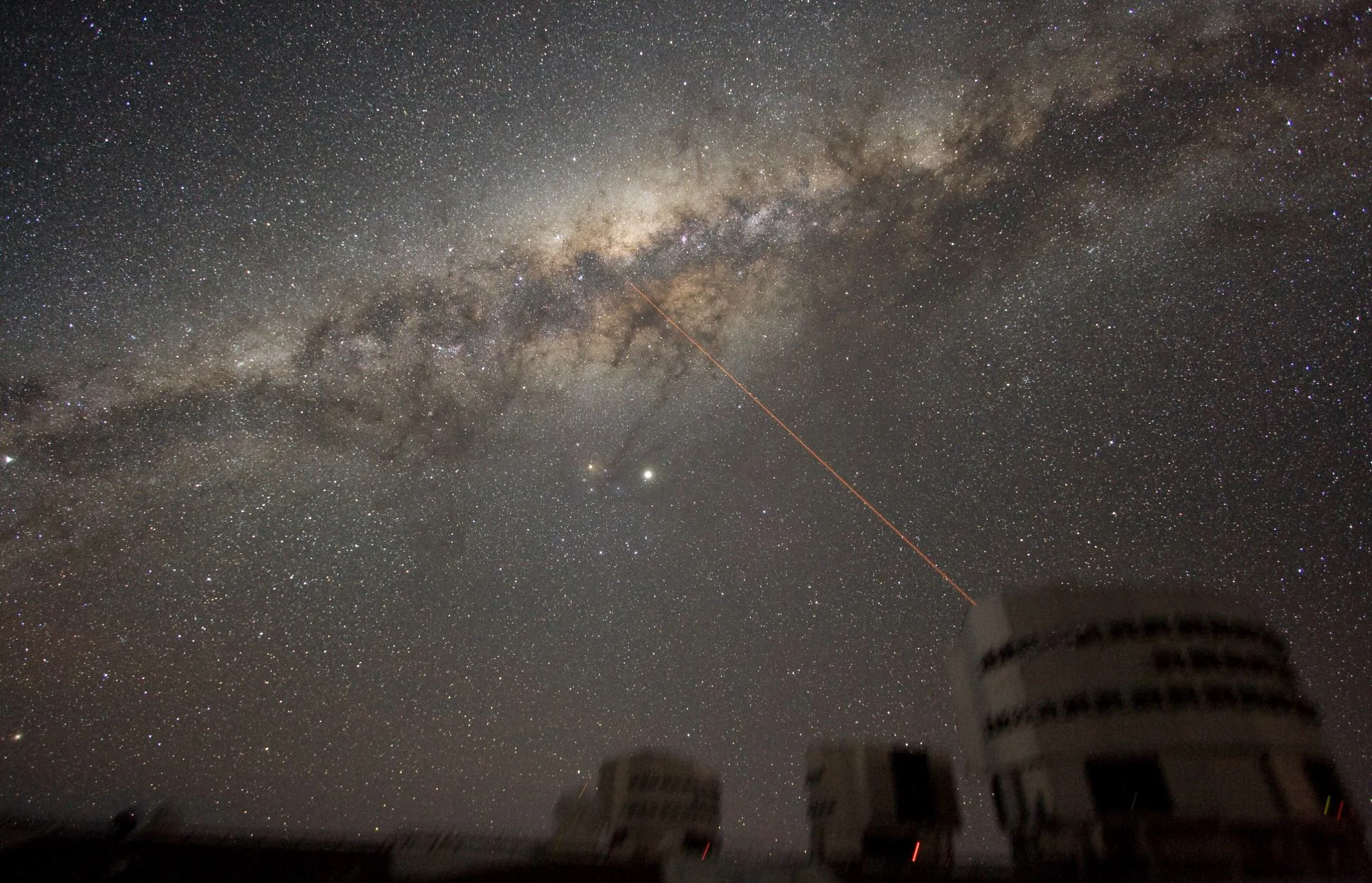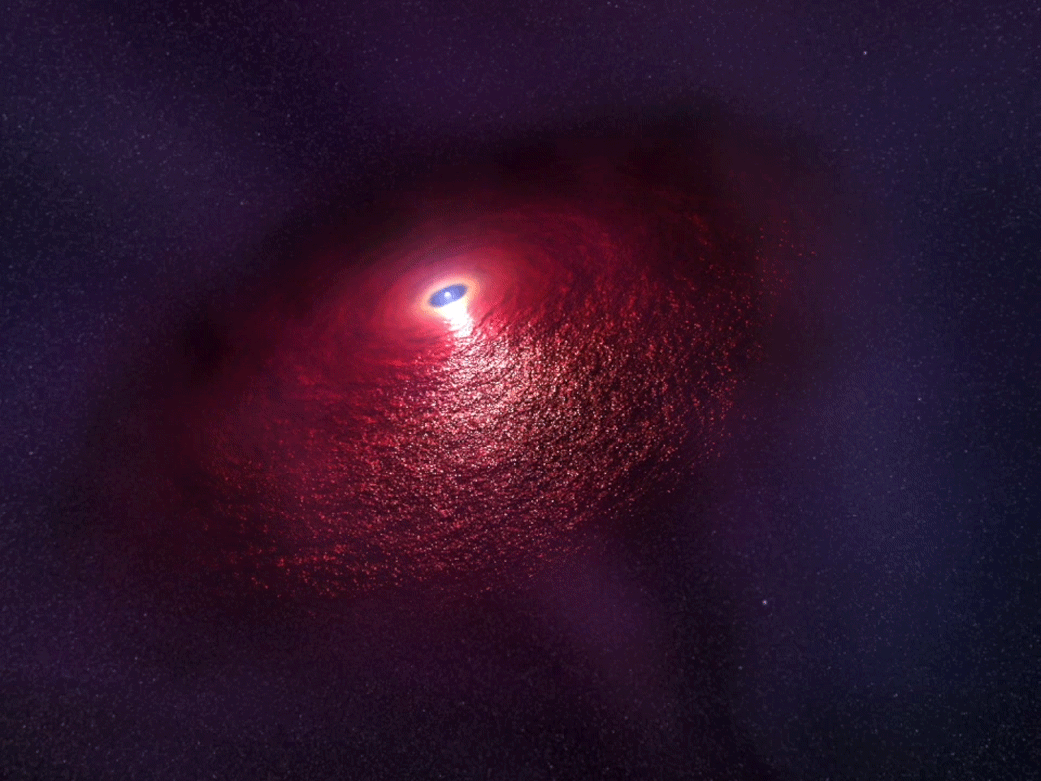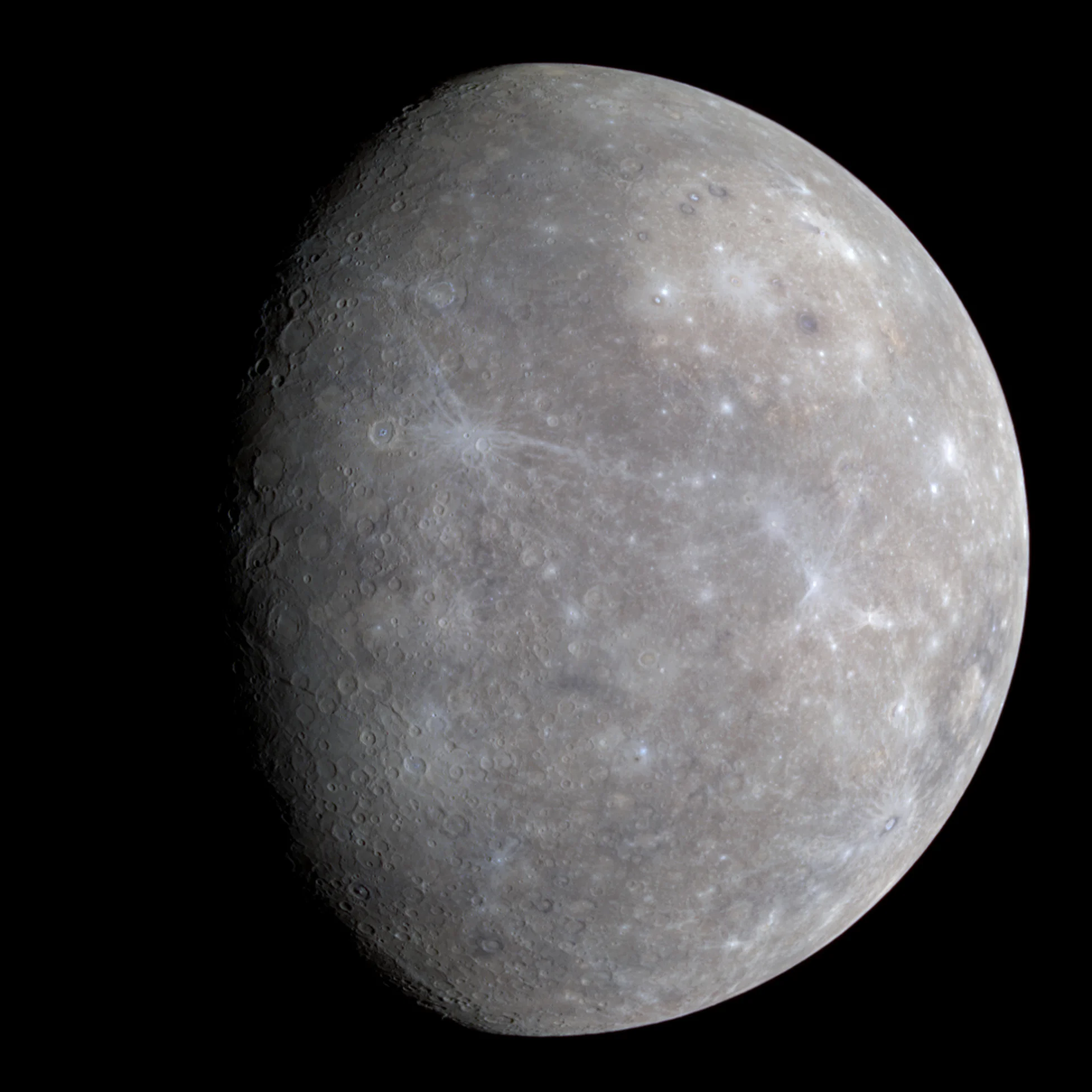Say you meet an old friend at the train station. She is standing about a metre ahead of you, and on the tracks to your right a train has just pulled into the station. Behind your friend you see a bakery. We often remember such scenes in vivid detail. But exactly how we do that by forming mental images has long been a bit of a mystery.
Author of first English novel kept it hidden for ten years – here’s why
A dense work of early English prose, strewn throughout with serious and teasing marginalia from its author, might not be the most likely candidate for stage adaptation – but this project has just been undertaken by a team of artists and academics in Sheffield. William Baldwin’s Beware the Cat, written in 1553, will be performed in September as part of the university’s 2018 Festival of the Mind.
NASA Balloon Mission Captures Electric Blue Clouds
On the cusp of our atmosphere live a thin group of seasonal electric blue clouds. Forming 50 miles above the poles in summer, these clouds are known as noctilucent clouds or polar mesospheric clouds — PMCs. A recent NASA long-duration balloon mission observed these clouds over the course of five days at their home in the mesosphere. The resulting photos, which scientists have just begun to analyze, will help us better understand turbulence in the atmosphere, as well as in oceans, lakes and other planetary atmospheres, and may even improve weather forecasting.
Close-Up View of DNA Replication Yields Surprises
Almost all life on earth is based on DNA being copied, or replicated, and understanding how this process works could lead to a wide range of discoveries in biology and medicine. Now for the first time scientists have been able to watch individual steps in the replication of a single DNA molecule, with some surprising findings. For one thing, there’s a lot more randomness at work than has been thought.
Narrowing Down the Mass of the Milky Way
Since the birth of modern astronomy, scientists have sought to determine the full extent of the Milky Way galaxy and learn more about its structure, formation and evolution. At present, astronomers estimate that it is 100,000 to 180,000 light-years in diameter and consists of 100 to 400 billion stars – though some estimates say there could be as many as 1 trillion.
With USB-C, even plugging in can set you up to be hacked
Plugging in the power – or at least what you think is power – to a USB-C powered laptop can connect your computer, and the valuable personal data on it, directly to hackers. Your personal financial information, passwords and documents stored on the laptop could help a cybercriminal steal your identity. The laptop may even be used to attack your employer’s computers and network.
How to Know Once and For All if the Universe Began With a Bang or a Bounce
According to the Big Bang cosmological model, our Universe began 13.8 billion years ago when all the matter and energy in the cosmos began expanding. This period of “cosmic inflation” is believed to be what accounts for the large-scale structure of the Universe and why space and the Cosmic Microwave Background (CMB) appear to be largely uniform in all directions.
Microplastics are getting into mosquitoes and contaminating new food chains
The ‘real you’ is a myth – we constantly create false memories to achieve the identity we want
We all want other people to “get us” and appreciate us for who we really are. In striving to achieve such relationships, we typically assume that there is a “real me”. But how do we actually know who we are? It may seem simple – we are a product of our life experiences, which we can be easily accessed through our memories of the past.
AI could help drones ride air currents like birds
Birds have long inspired humans to create their own ways to fly. We know that soaring bird species that migrate long distances use thermal updrafts to stay in the air without using up energy flapping their wings. And glider pilots similarly use thermals currents and other areas of rising air in order to remain airborne for longer.
To Avoid Vision Problems in Space, Astronauts Will Need Some Kind of Artificial Gravity
Ever since astronauts began going to space for extended periods of time, it has been known that long-term exposure to zero-gravity or microgravity comes with its share of health effects. These include muscle atrophy and loss of bone density, but also extend to other areas of the body leading to diminished organ function, circulation, and even genetic changes.
NASA’s TESS Shares First Science Image in Hunt to Find New Worlds
NASA’s newest planet hunter, the Transiting Exoplanet Survey Satellite (TESS), is now providing valuable data to help scientists discover and study exciting new exoplanets, or planets beyond our solar system. Part of the data from TESS’ initial science orbit includes a detailed picture of the southern sky taken with all four of the spacecraft’s wide-field cameras. This “first light” science image captures a wealth of stars and other objects, including systems previously known to have exoplanets.
How the zebrafish got its stripes
The Closest Planet Ever Discovered Outside the Solar System Could be Habitable With a Dayside Ocean
In of August of 2016, astronomers from the European Southern Observatory (ESO) confirmed the existence of an Earth-like planet around Proxima Centauri – the closest star to our Solar System. In addition, they confirmed that this planet (Proxima b) orbited within its star’s habitable zone. Since that time, multiple studies have been conducted to determine if Proxima b could in fact be habitable.
Rogue hurricanes that head northwards may be new normal
Shortly after Hurricane Helene formed off the coast of West Africa on September 7, it did something unusual. Instead of following most hurricanes westward across the Atlantic, Helene turned north towards the UK and Ireland. Now downgraded to an “ex-hurricane”, Storm Helene is nonetheless expected to bring strong winds across much of England and Wales when it hits on September 17.
Hubble Uncovers Never-Before-Seen Features Around a Neutron Star
An unusual infrared light emission from a nearby neutron star detected by NASA’s Hubble Space Telescope could indicate new features never before seen. One possibility is that there is a dusty disk surrounding the neutron star; another is that there is an energetic wind coming off the object and slamming into gas in interstellar space the neutron star is plowing through.
Vital for life, heat and power – what you never knew about salt water
Magnetic bacteria and their unique superpower attract researchers
As a graduate student in the 1970s, microbiologist Richard Blakemore probably wasn’t expecting to discover a new bacterial species with a never-before-seen ability. While studying bacteria that live in muddy swamps, he observed that some tended to swim reliably toward the same geographical direction. Even when he rotated the microscope, they persisted in wiggling toward one direction. After confirming that their swimming behaviors were unaffected by light, Blakemore suspected they might be responding to the weak magnetic fields naturally present on Earth.
Forming Dense Metal Planets like Mercury is Probably Pretty Difficult and Rare in the Universe
The planet Mercury, the closet planet to our Sun, is something of an exercise in extremes. Its days last longer than its years and at any given time, its sun-facing side is scorching hot while its dark side is freezing cold. It is also one of the least understood planets in our Solar System. While it is a terrestrial (i.e. rocky) planet like Earth, Venus and Mars, it has a significantly higher iron-to-rock ratio than the others.

